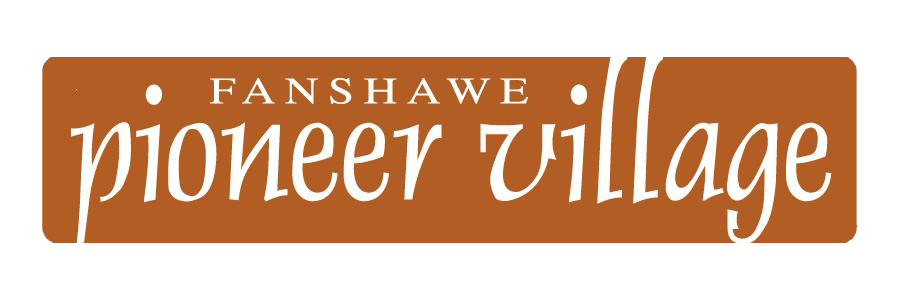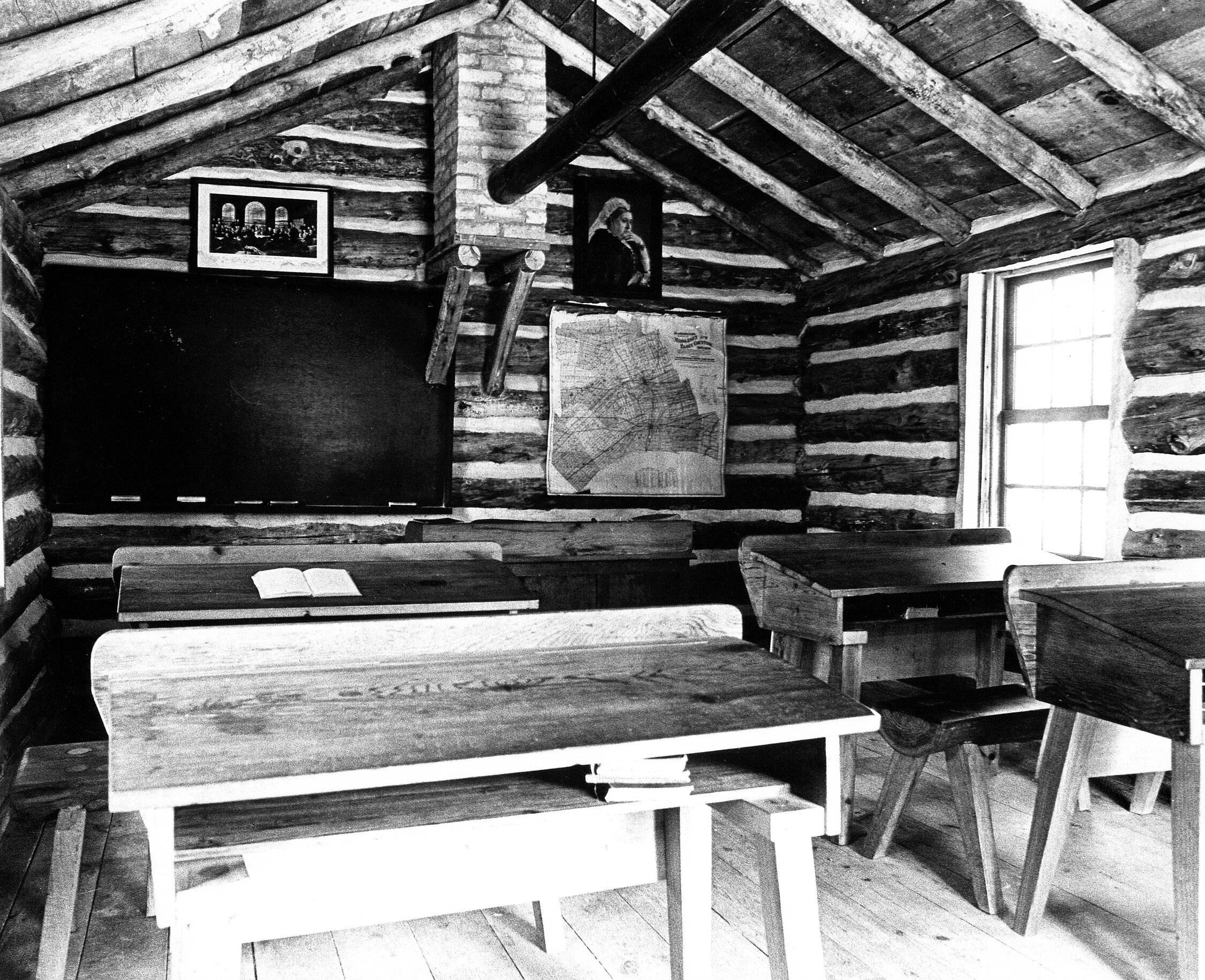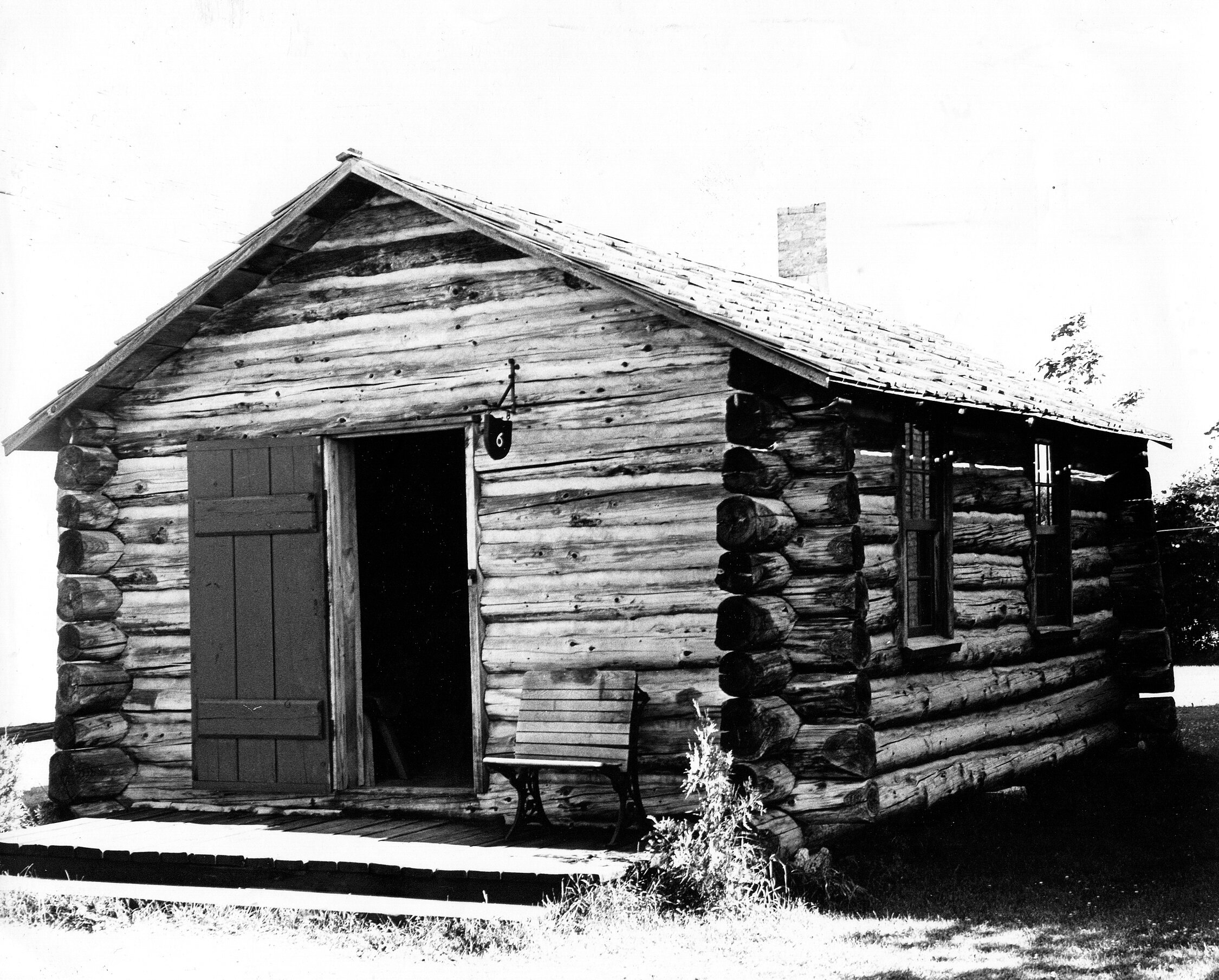Log School
Replica Building
Built 1974
Representative of an 1840s School
The Village’s Log School is a replica building constructed by a “Students Working on Environmental Enhancement Projects” (SWEEP) crew in 1974.
Though this structure depicts the type of space students might have attended during the 1840s, in terms of building size and materials, it should be noted that this replica represents a French- Canadian design. Early Middlesex County log buildings were typically built with square logs and dovetail construction, whereas this log school has round logs and saddle notches. Before the mid-1800s, there was no formal school system in Upper Canada. Most children lived in rural communities, on farms or in small villages. Knowledge, skills, and values were passed on to children by parents at home. From an early age, children began a life of work, assisting their families on their farm. Others apprenticed outside the home. Some wealthy children were privately tutored.
The few schools which did exist were often church run. Their primary purpose was to instill in children strict moral and religious values, with literacy being taught to ensure students could read the Bible.
By the mid-1800s society was quickly changing. Tasks began to require more technical knowledge, leading people to feel that the informal education practices in their communities were insufficient in preparing children for adult life. Families worked together to build and run schools for children to attend for a small fee, or sometimes free of charge.
The qualifications of teachers varied greatly during this period. In rural areas, parents might rally behind a community member to teach or post an advertisement to find someone more qualified. In remote areas, teachers often had little experience. Their selection relied more on their willingness to teach and moral character than their qualifications.
Early Education
In the early days of schooling in Upper Canada, attendance was not mandatory. Children from wealthier backgrounds often received more formal education than the average person, as early schools required tuition fees which were a barrier for many families. Even as funding for schools increased, and tuition fees were reduced, parents often continued to keep older children at home where they could be of “more use.” Slowly, demand for accessible education increased as people saw education as a way to better oneself.
During the early 1800s a series of School Acts were passed to form a regulated school system. In the early 1840s, a General Board of Education was established for the province. By the end of the 1840s, centralized administration of schools was beginning to form, with procedures on classification of teachers and a list of prescribed textbooks.
Building restoration supported by Special High Skills Major Program in Construction at Lucas Secondary School and Community Infrastructure Improvement Fund, Federal Economic Development Agency for Southern Ontario








